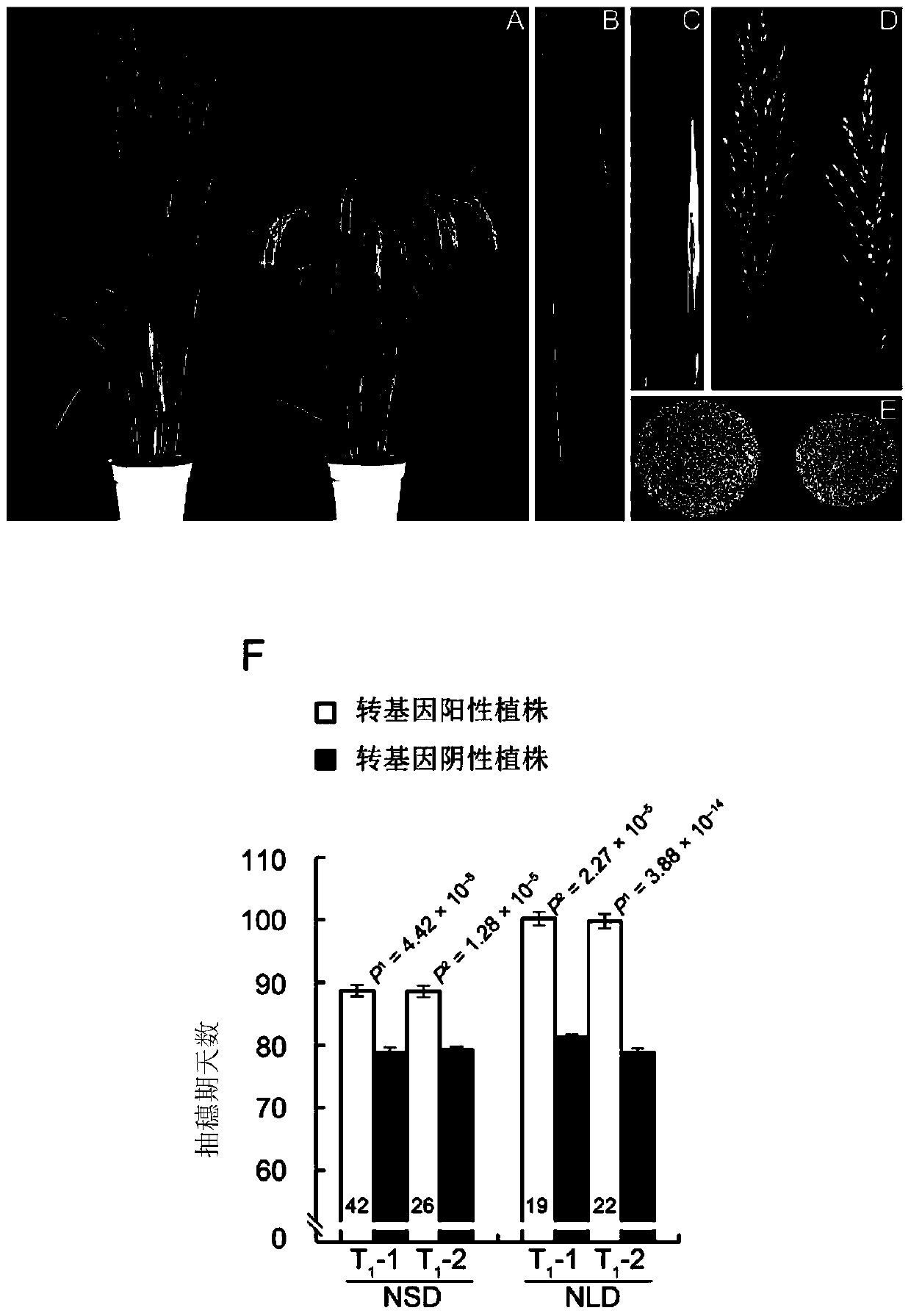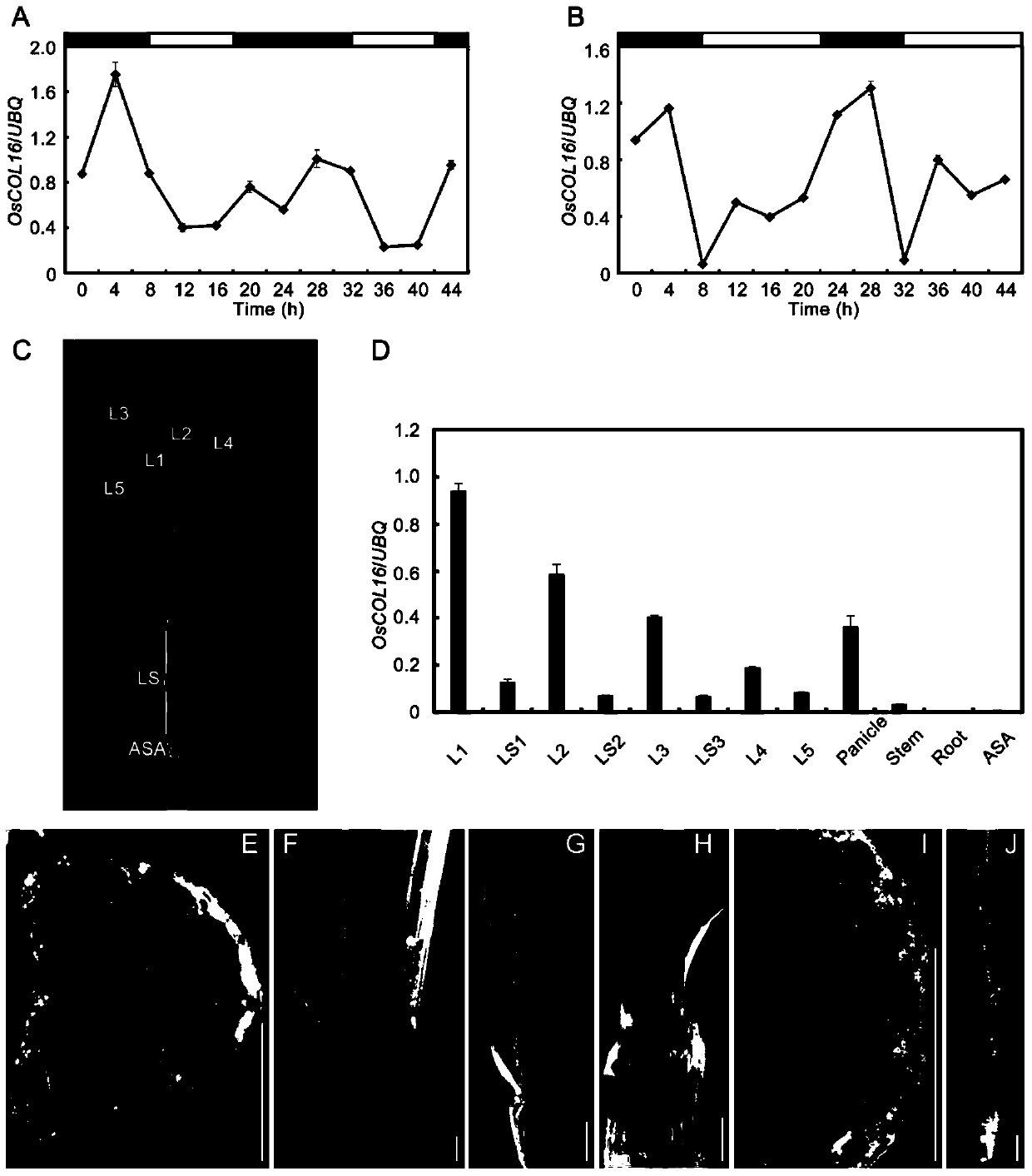Application of oscol16 gene in controlling rice heading stage
A technology of transgenic rice and heading date, applied in the field of genetic engineering, can solve the problems of reduced yield, low seed maturity, shortened vegetative growth period, etc.
- Summary
- Abstract
- Description
- Claims
- Application Information
AI Technical Summary
Problems solved by technology
Method used
Image
Examples
Embodiment 1
[0033] Example 1 Overexpression of OsCOL16 gene delayed heading
[0034] 1. Construction of overexpression vector
[0035] In order to obtain the phenotype of overexpressing the OsCOL16 gene in rice, an overexpression vector was constructed in this example. The specific construction method is as follows: plant the wild-type variety Nipponbare (English name Nipponbare, the whole genome sequencing has been completed) to about two weeks seedlings, use the plant RNA mini kit (purchased from Tiangen Biotechnology Co., Ltd.) to extract RNA, and then reverse transcribe into cDNA, the full-length cDNA sequence (SEQ ID NO: 1 ). The fragment was then recombined into the Xma I site of plasmid pCAMBIA2300 (purchased from Fermentas, Canada) by homologous recombination.
[0036] 2. Agrobacterium-mediated genetic transformation of rice
[0037] The obtained recombinant plasmid with correct sequencing was transferred into the callus of recessive genotype parent NIL (DTH2) through the rice...
Embodiment 2
[0042] Example 2 Spatio-temporal expression pattern of OsCOL16 gene
[0043] In order to study the rhythmic expression pattern of OsCOL16, we studied the expression level of OsCOL16 gene by real-time fluorescent quantitative PCR (qRT-PCR), and the primer sequences were qRT-OsCOL16-F (SEQ ID NO: 8) and qRT-OsCOL16-R (SEQ ID NO: 9). Leaves were collected every 4 hours during a 48-hour cycle under short-day (10 hours light, 14 hours dark) and long-day (14 hours light, 10 hours dark) conditions in a light incubator. Under short-day conditions, the expression level of OsCOL16 began to increase 4 hours after the light period, peaked at 10 hours after the dark period, then decreased rapidly and then gradually increased after the light period ( figure 2 A). Similarly, under long-day conditions, the expression level of OsCOL16 began to increase after the light period, peaked at 6 hours after the dark period, then decreased rapidly and then gradually increased after the light period ...
Embodiment 3
[0045] Example 3 Analysis of subcellular localization and transcriptional self-activation activity of OsCOL16 gene
[0046] 1. Subcellular localization of OsCOL16 gene
[0047] According to the Rice Genome Annotation Project database (http: / / rice.plantbiology.msu.edu), OsCOL16 encodes a predicted CCT / B-box zinc finger transcription factor. There is only one B-box domain (21-58aa) at the N-terminus, and one CCT domain (391-433aa) at the C-terminus. To determine whether OsCOL16 is a transcription factor with nuclear localization function, we performed subcellular localization experiments to verify its function. In this embodiment, a subcellular localization vector is constructed, and the vector construction process is as follows: use primers OsCOL16-GFP-BamHI-F (SEQ ID NO: 12) and OsCOL16-GFP-BamHI-R (SEQ ID NO: 13), to The full-length cDNA of OsCOL16, that is, the sequence shown in SEQ ID NO: 1 was amplified as a template, and then the fragment was recombined into the Bam HI ...
PUM
 Login to View More
Login to View More Abstract
Description
Claims
Application Information
 Login to View More
Login to View More - R&D
- Intellectual Property
- Life Sciences
- Materials
- Tech Scout
- Unparalleled Data Quality
- Higher Quality Content
- 60% Fewer Hallucinations
Browse by: Latest US Patents, China's latest patents, Technical Efficacy Thesaurus, Application Domain, Technology Topic, Popular Technical Reports.
© 2025 PatSnap. All rights reserved.Legal|Privacy policy|Modern Slavery Act Transparency Statement|Sitemap|About US| Contact US: help@patsnap.com



